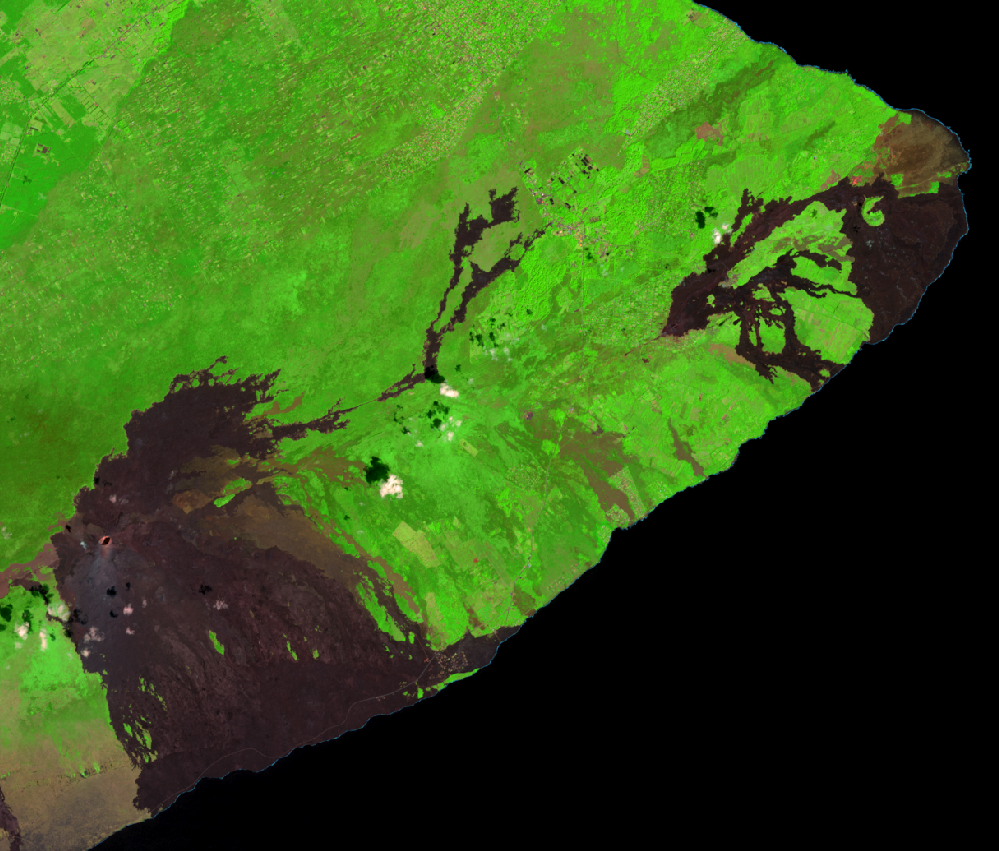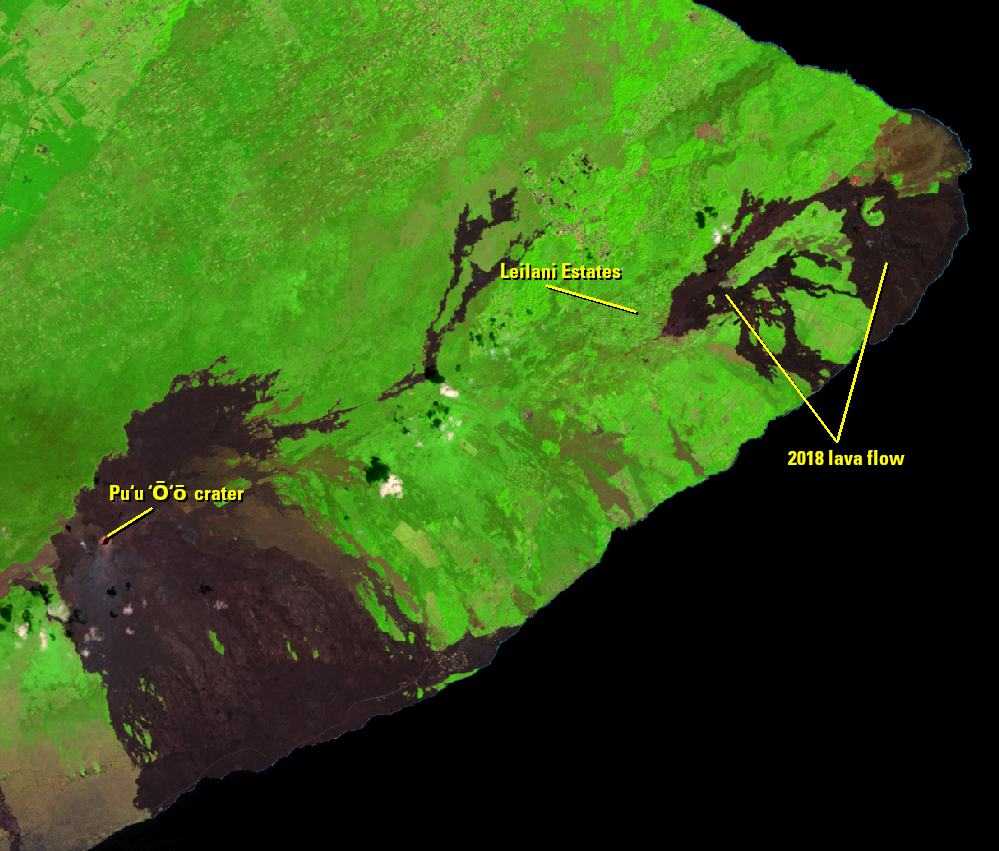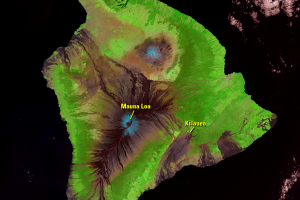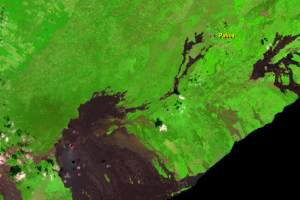
End of the Pu‘u ‘Ō‘ō Eruption
Earth Resources Observation and Science (EROS) Center - Earthshots
Meanwhile, at the summit of Kīlauea, the Halema‘uma‘u crater and surrounding caldera floor subsided throughout the summer of 2018. Kīlauea has something like a plumbing system connecting Halema‘uma‘u crater at the summit to the lower flanks of the volcano. The collapse at Halema‘uma‘u suggests the underlying magma reservoir largely drained into the lower East Rift Zone to feed the lava flows.
Magma draining from the summit hints at the possibility of a quiet interlude at Kīlauea for several years. While April 30, 2018, marked the beginning of the recent lava flow event, it also marked the end of the continuous eruptive activity at Pu‘u ‘Ō‘ō that started in 1983.
Although lava flowed from the East Rift Zone and devastated the Leilani Estates neighborhood, the April 30 collapse of Pu‘u ‘Ō‘ō crater left this eruption site devoid of lava. Since lava did not return to the crater after August 4, the USGS has said the Pu‘u ‘Ō‘ō eruption is over.
However, the USGS Volcano Hazards Program says Kīlauea is still active and will erupt again. Volcano hazards in the area remain the same. Based on historical data, it’s unlikely that lava will erupt again from Pu‘u ‘Ō‘ō, but the East Rift Zone still has magma underneath, and it will erupt again through another vent. It may take several years for enough magma to accumulate again, but Kīlauea and the East Rift Zone remain very active.
The USGS Hawaiian Volcano Observatory created a geonarrative to summarize the history of Kilauea eruptions and the 2018 lava flows.








